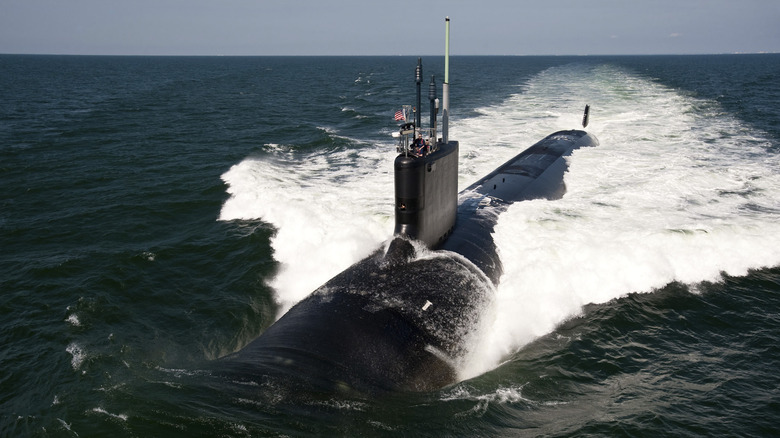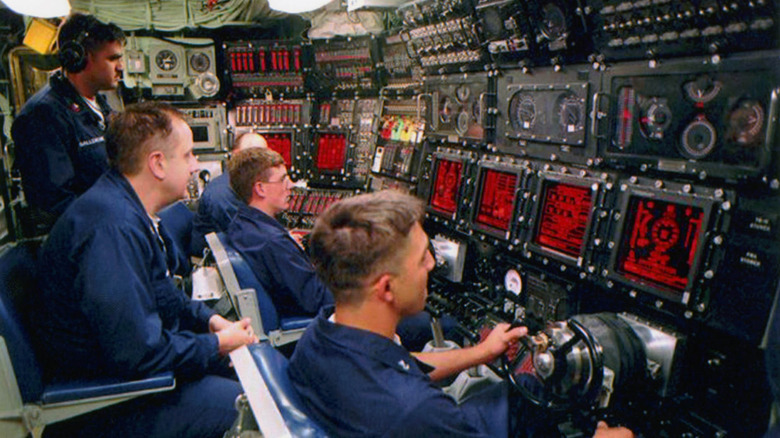Do Military Submarines Have Windows?
If you've spent any amount of time looking at a US Navy submarine, or subs from any navy, then you've probably noticed that they aren't generally constructed with windows. Sure, windows might make it slightly easier to navigate, and it's not uncommon to see private submersibles with windows. Any submarine that's going to dive to 800 feet or deeper isn't going to benefit from windows anywhere on its hull. As Northrop Grumman notes, "The water pressure against the external hull of any vessel at extreme depths is too strong for a large window, and special, thick, cone-shaped glass would be needed to prevent a window from being pushed through the steel hull of the submarine."
Even if crushing pressure wasn't an issue, visibility would be. Once past the 200 meter (656 feet) mark, there's not much sunlight to bask in. This is known as the dysphotic (or twilight) zone, where sunlight gradually dissipates, and at 1,000 meters (3,280 feet), there's no sunlight at all. No military submarine is rated to dive to the aphotic zone, but the USS Dolphin holds the record for making it to 910 meters, so it's possible it could go deeper. Either way, if a military sub could make it down there, visibility would be challenging. A submarine would require powerful lights that can cut through the darkness as well as the floating particulate matter to see at those depths.
Stealth would go right out the window — no pun intended — if attack submarines and boomers used lights. It would be easier for adversarial submarines to find each other and would potentially negate SSBNs as one arm of America's nuclear triad.
Military submarines use sensors to navigate
It might seem like military submarines navigate the vast oceans blind, but that couldn't be further from the truth. Submarine captains and helmsmen utilize a number of tools to safely get from one location to another that could be arguably more important than the human eye. For starters, there are navigational charts that reveal the topographical features of the ocean floor. These are regularly updated so submariners are kept abreast of the most recent data. When a submarine has charts with discrepancies, they end up like the USS Connecticut, the Seawolf-class submarine that crashed into an underwater mountain.
Sailors rely on global positioning systems (GPS) when a sub is surfaced, giving those in charge of navigation an accurate longitude and latitude reading. However, once the sub is beneath the ocean's waves, GPS doesn't work. Subs use an inertial guidance system for underwater navigation. This guidance system uses gyroscopes to measure the boat's motion. It's only accurate for up to 150 hours before the submarine needs to resurface for the system to be recalibrated with GPS.
SONAR is a significant tool for submarines as well, and is mainly for locating specific objects. Military submarines have both passive and active SONAR. Passive SONAR is always listening for different sounds to determine if there are mechanical or biological objects nearby. When the crew think there is a nearby object that passive SONAR isn't picking up, they'll use active SONAR, which produces a burst of sound that will help determine how close an object is. The downside is that this is a loud 'ping' that adversaries can detect with their own SONAR systems.

